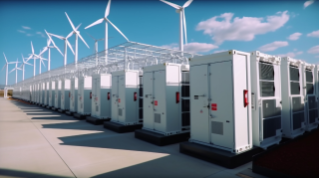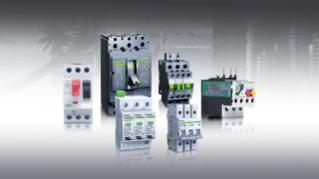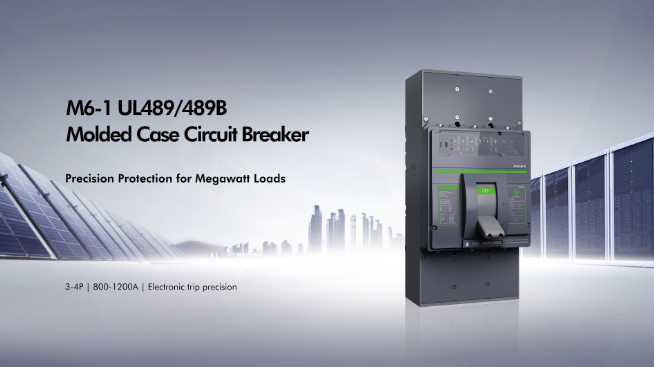Picture this: You’ve just installed a new conveyor motor in your facility. The nameplate says 15 amps, so you’ve installed a 20-amp circuit breaker—plenty of headroom, right? But the moment you hit the start button, the breaker trips. This is often due to an overcurrent event, which can trigger the breaker's protective mechanism. You reset it. Trip again. You check the wiring, verify the breaker rating, and everything looks correct on paper. So why does it keep tripping?
If this scenario sounds familiar, you’re not alone. Countless maintenance engineers, electricians, and facility managers face this frustrating problem every day. The culprit? Inrush current—that brief surge of power that motors, transformers, and other inductive loads demand when they first start up. This surge can be 5 to 14 times higher than the normal running current, and it lasts just milliseconds.
Here’s the crucial insight that will save you hours of troubleshooting: The solution isn’t installing a bigger breaker—it’s installing the right TYPE of breaker. Miniature circuit breakers provide overload protection to prevent equipment damage and fires by disconnecting power when wires are exposed to dangerous current levels. Understanding MCB trip curves is the key to eliminating nuisance tripping while maintaining robust protection for your electrical circuits.
Quick Primer: What Are Trip Curves B, C, and D?
Before we dive into solving specific problems, let’s demystify what trip curves actually mean. Miniature circuit breakers (MCBs) are protective devices designed by manufacturers to safeguard circuits from overcurrent events, and their tripping characteristics are defined by specific tripping curves. Every miniature circuit breaker (MCB) uses a combination of thermal and magnetic trip mechanisms to protect circuits:
- Thermal trip: Responds to sustained overloads (like a motor running hot), with the thermal response influenced by ambient temperature.
- Magnetic trip: Responds instantly to short circuit conditions and, crucially, to inrush currents.
There are different types of curve breakers, and the difference between B, C, and D curves lies in the magnetic trip threshold—essentially, how much of a current spike the breaker will tolerate before tripping instantly. These are the most common curves used in circuit protection, and each curve breaker is suited for different types of loads, such as resistive loads, mixed loads, and circuits with small motors.
The trip curve chart (often presented as a table) shows the relationship between current level and trip time, typically using a logarithmic scale to illustrate the response of the device to various overload and short circuit conditions.
Here’s the simple breakdown:
Type B Curve: Magnetic trip occurs at 3-5 times rated current. Use for resistive loads that power on smoothly and gently—think lighting circuits, heating elements, and control systems that shouldn’t experience high startup surges.
Type C Curve: Magnetic trip occurs at 5-10 times rated current. This is your workhorse for mixed loads in everyday industrial and commercial equipment. It handles the moderate inrush of standard motors, pumps, small motors, and fans without breaking a sweat.
Type D Curve: Magnetic trip occurs at 10-20 times rated current. Reserved for heavy-duty applications with high inrush currents—large motors, transformers, welding equipment, and generators that need that extra tolerance during startup.
For example, a Type B curve is suitable for resistive loads, while a Type C curve is ideal for mixed loads and small motors, and a Type D curve is designed for high inrush currents in heavy-duty applications.
The tripping characteristics of MCBs are influenced by ambient temperature, which can affect the thermal response of the breaker.
While fuses also provide overload protection, miniature circuit breakers offer more precise tripping curves and can be reset after a trip, making them preferable for many modern installations.
Selecting the right breaker involves considering the current rating, tripping curves, and the specific performance requirements of your application to ensure safe and reliable protection.
Solving Your Tripping Problem: Matching the Curve to the Load
Let’s take a practical, problem-solving approach to selecting the right curve for your application. The goal is to prevent overload and fault conditions from causing unnecessary interruptions, while ensuring the breaker will break the circuit when a genuine problem occurs.
Problem 1: "My Control Circuit or PLC Power Supply Trips Randomly"
The Situation: You're protecting sensitive electronics—perhaps power supplies for PLCs, control instrumentation, or relay circuits. The breaker occasionally trips even though calculated loads are well within limits.
The Solution: Use a Type B curve. Here's why this makes sense: Control circuits and electronic power supplies should have minimal inrush current. If your breaker is experiencing high current spikes that trigger a Type C breaker, something is wrong—perhaps a component failure, a degrading capacitor, or intermittent short circuits.
A Type B curve's lower magnetic trip threshold (3-5x rated current) provides sensitive protection that will catch these problems early, before they damage expensive control equipment. It won't tolerate current spikes that shouldn't be there in the first place, making it ideal for branch circuit protection in control panels and instrumentation cabinets.
Problem 2: "My Pump/Conveyor/HVAC Fan Trips the Breaker on Startup"
The Situation: This is the classic nuisance tripping scenario. Your motor is properly sized, the cable is correct, and the breaker rating seems appropriate. But every time the motor starts, especially under load, the breaker trips.
The Solution: Switch to a Type C curve. This is precisely what C curves were designed for. Standard AC motors, whether driving pumps, conveyors, fans, or HVAC equipment, typically draw 5-8 times their rated current during the brief startup period (usually less than one second). A Type C breaker, with its 5-10x magnetic trip threshold, ignores these normal startup characteristics while still providing excellent protection against genuine short circuits and sustained overloads.
Type C curves are the most commonly specified in industrial and commercial applications for good reason—they strike the perfect balance between startup tolerance and protection sensitivity. For facilities with multiple motors, pumps, and fans, Type C should be your default choice.
Problem 3: "I Can't Get My Large Generator/Transformer Online Without Tripping the Breaker"
The Situation: You're working with transformers, large generators, X-ray equipment, or other devices with significant magnetic or capacitive components. These loads can produce inrush currents of 10-14 times rated current or higher during energization.
The Solution: You need a Type D curve. The D curve's delayed magnetic trip (10-20x rated current) is specifically engineered to withstand these very high but short-lived inrush events. While this level of tolerance isn't appropriate for general circuits, it's essential for heavy-duty equipment that would otherwise be impossible to start with standard breakers.
Type D breakers are common in industrial settings with large motor loads—think cranes, elevators, industrial mixers, and compressors. They're also used in welding equipment circuits where the arc striking creates substantial current spikes.
The Right Tool for the Job: The NOARK B1H/N MCB Series
Now that you understand which curve solves which problem, let's talk about the hardware to implement these solutions reliably.
The NOARK B1H/N series represents a comprehensive, UL 489 certified solution for all three curve types. Rather than sourcing different brands for different applications—risking compatibility issues, varying quality standards, and complicated inventory management—the B1H/N series provides B, C, and D curves in a single product family.
Key advantages that address real-world installation challenges:
Equipped with UL 486 rated terminals, which means the breakers can be wired directly to the load without requiring separate terminal strips—reducing installation time and potential connection points where problems can develop.
Compact 18mm (0.71 inch) module width per pole saves valuable panel space, particularly important in retrofit applications where panel real estate is at a premium.
Rated voltage reaches 480Vac, making them suitable for both industrial equipment and residential buildings without needing different product lines.
Field-installable accessories including shunt trip and auxiliary switches allow you to add functionality as needs evolve, without replacing the entire breaker.
Visual contact position indicator (red/green) makes it immediately obvious which circuits are energized—a simple feature that enhances safety during troubleshooting and maintenance.
The versatility of the B1H/N series means you can confidently specify it across diverse applications: whether it's for cranes and elevators requiring Type C or D curves to handle motor starting, HVAC equipment and motor control circuits benefiting from Type C protection, or convenience receptacle circuits and control instrumentation needing the sensitive protection of Type B curves, the B1H/N series delivers consistent quality across all scenarios.
Bonus Tip: Don't Make This Common Mistake!
Here's a critical warning that could save you from a dangerous situation: When faced with nuisance tripping, never simply upsize the breaker amperage to solve the problem.
It's tempting logic: if a 20A breaker trips, try a 30A breaker. But this approach creates serious safety hazards. Circuit breakers exist not just to protect equipment, but to protect the cables feeding that equipment. Cable ampacity (current-carrying capacity) is determined by wire gauge—14 AWG for 15A circuits, 12 AWG for 20A circuits, and so on.
When you install a 30A breaker on 12 AWG wire sized for 20A, you've created a situation where the cable can overheat before the breaker trips. The insulation degrades, the wire temperature rises, and you've now introduced a fire hazard into your facility. The National Electrical Code exists specifically to prevent these scenarios.
The safe and proper solution is always to correct the trip curve, not increase the amperage. Match the curve characteristic to your load's inrush profile, and you'll eliminate nuisance tripping while maintaining appropriate protection levels.
Stop Fighting Nuisance Trips — Select the Right Curve for the Load
Understanding MCB trip curves transforms what seems like a mysterious electrical problem into a straightforward selection decision. Type B for sensitive, low-inrush loads. Type C for standard motors and everyday equipment. Type D for heavy-duty applications with extreme inrush currents.
The right trip curve doesn't just eliminate frustrating breaker trips—it optimizes protection coordination, reduces unnecessary downtime, and ensures your electrical system operates safely and efficiently. Combined with quality hardware like the NOARK B1H/N series, you have a complete solution that handles the full spectrum of protection requirements in modern industrial and commercial facilities.
Eliminate downtime in your facility. Contact a CHINT expert today to get help selecting the right B1H/N series MCB for your most challenging applications. Whether you're troubleshooting persistent tripping issues or designing a new installation, expert guidance ensures you specify the optimal protection strategy from the start.






.jpeg)

.jpeg)
.png)
.png)
.png)


